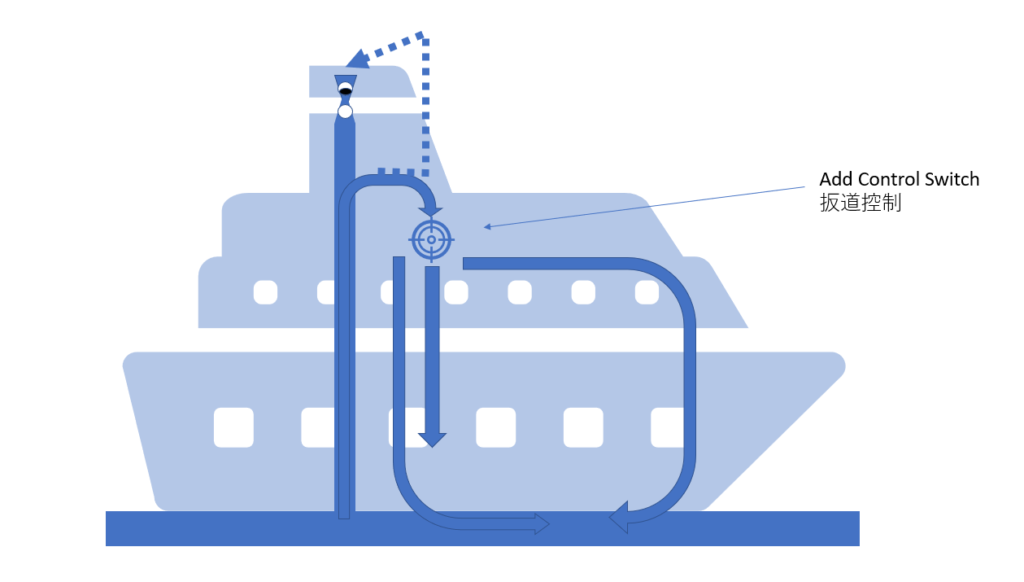Density of water is 1000 times that of air. In ancient times, ship were propelled by wind and sails. But wind comes and go at the mercy of mother nature. If a vessel is propelled by actively breathing, instead of passively waiting, the energy to power the ship could be constantly available in all weather conditions. With one breath of cyclone, could be equivalent to the power of 1000 times of a gust of wind, the accumulative effect of quantized wind is really surprising! not any less formidable then atomic energy.
水的密度是空气的密度的1000倍。古代几千年中曾有航船是由风(空气的流动)和桅帆来驱动的。但是何时起风全靠大自然的心情来决定,这太落后了,很不科学。与其消极地等待大自然形成的风来推动航船,不如让航船积极地呼吸空气,呼少吸多,来维持运动。若是在每一次的呼吸循环过程中,吸入的能量能够大到使水“往高处走”的龙卷风一样大的能量,再考虑到水的密度是空气的一千倍,那么以呼吸为推动力的航行器,其动力系统的威力是不亚于核动力系统所能提供的能量和功率的。
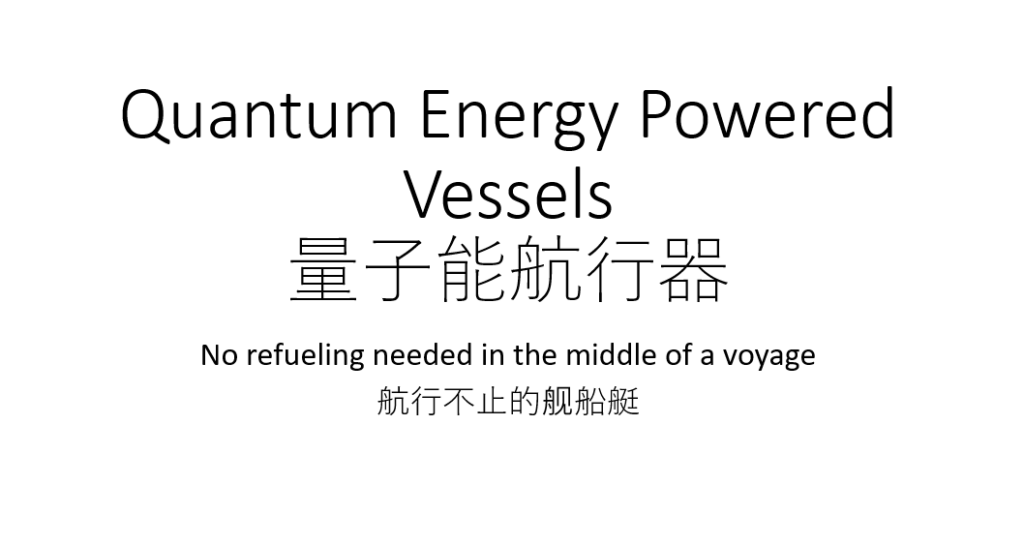
A breathing apparatus needs “negative entropy” and “quantum jump”. One can be achieved by blocking the water running down (like artery and pacemaker), the other can be achieved by pulsation pumps (like vein and pacemaker).
呼吸的装置需要有两个要素:1)负熵增;2)量子能级跳跃。负熵增可以通过阻挡“水往低处流”这样的熵增过程,来实现(如同液体在静脉中的运动受到起搏器影响后)。能级跳跃可以通过脉冲泵(如同液体在静脉中的运动受起搏器的影响后)来实现。
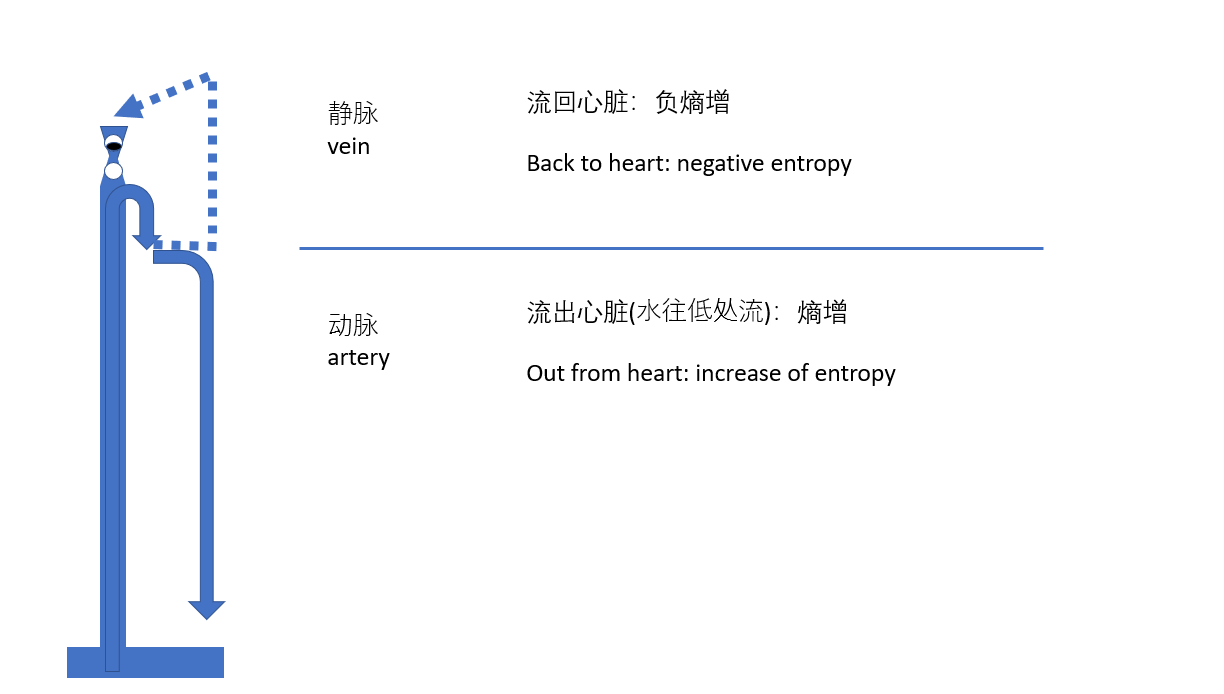
This is how the “drive” mode works for a quantum energy powered ship.
以下是量子化大气动力能源推动的航船处在“前进”状态中的示意图。
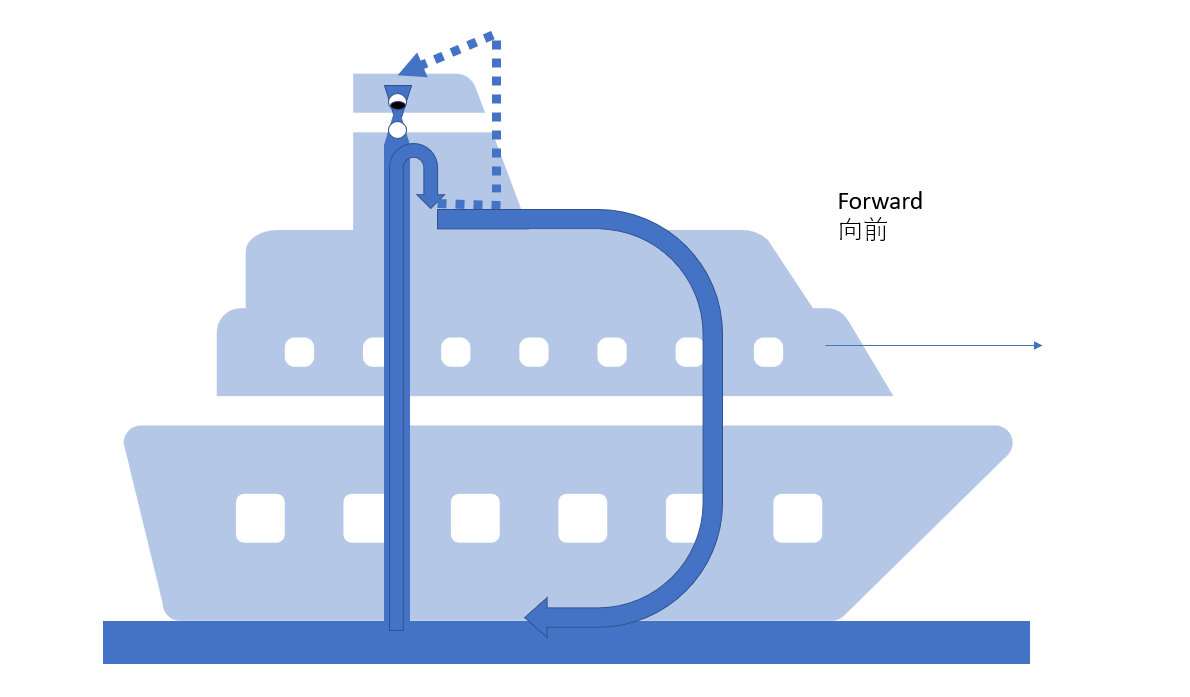
This is the “reverse” mode.
这是“倒车档”。
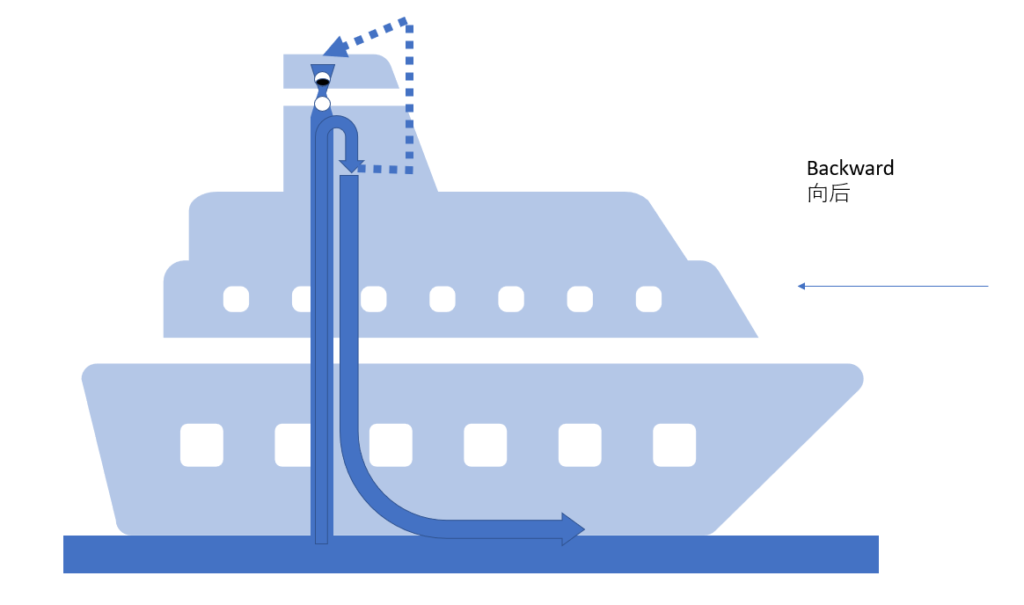
This is the “neutral” mode, while charging the battery.
这是“空挡”,同时储藏能源。
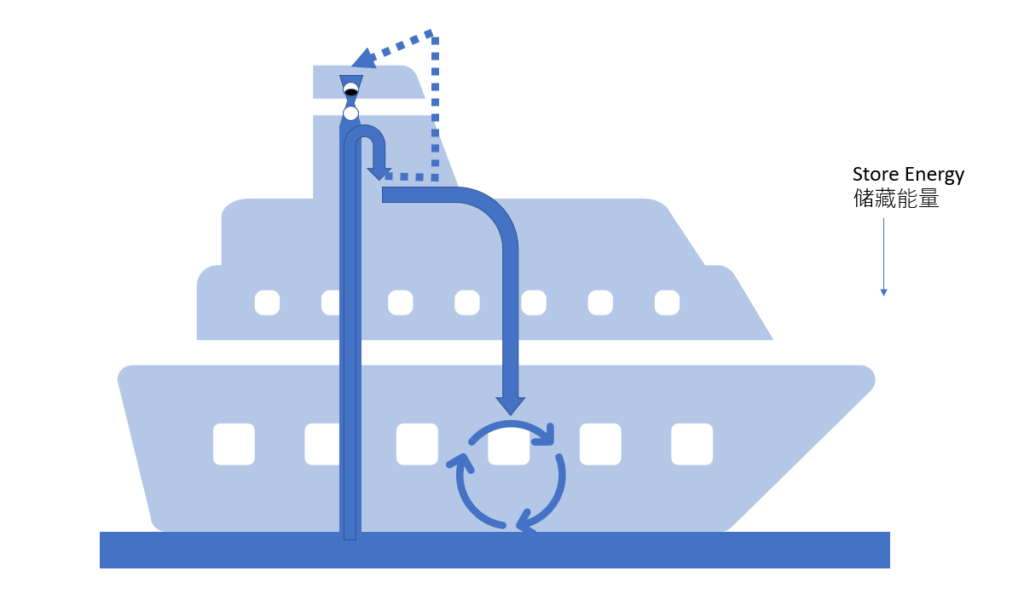
Putting it all together, we get a vessel that can breath, can sustain its own energy needs and have its one life, one can “move” and has its “motives”.
综上所述,一艘以呼吸方式驱动的船,能够自我补充能量,维持自我的生命,能够“行动”而且有“动机”。
